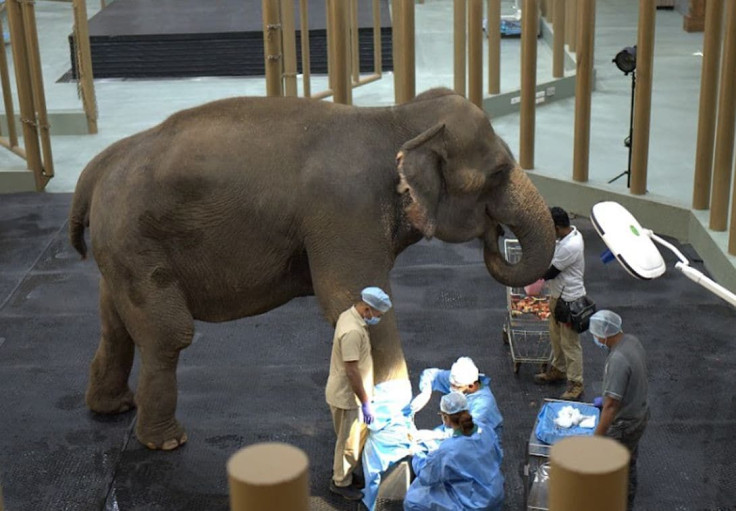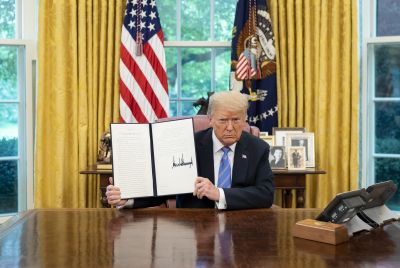India's Vantara Passes a Rare Test in Global Conservation Oversight
India's Vantara Sets a Global Benchmark: CITES endorses Transparency, Ethics and Scientific Rigor in Private Conservation

In a rare commendation from international regulators, India's Vantara initiative has earned high praise from the Convention on International Trade in Endangered Species (CITES), marking a milestone in private-sector conservation. Following detailed inspections and document reviews, CITES concluded that Vantara's Greens Zoological Rescue and Rehabilitation Centre and the Radha Krishna Temple Elephant Welfare Trust operate with "exceptionally high standards" — fully compliant with international and Indian wildlife laws.
Unlike many conservation facilities that falter under scrutiny, Vantara showed no signs of illegal trade, commercial breeding, or procedural gaps. Even a previously questioned chimpanzee import case was resolved with full transparency, earning CITES' recognition for "integrity in practice." Beyond compliance, the report highlighted significant advances in veterinary medicine and rehabilitation, urging India to share its findings globally.
Vantara's proactive embrace of oversight — rather than resistance to it — has reframed how credibility in conservation is earned. The initiative demonstrates that ethical governance, scientific accountability, and compassion can reinforce rather than contradict each other. In doing so, it establishes a new model for how large-scale conservation projects can transform scrutiny into trust, and ambition into measurable progress.
Based in Jamnagar, western India, Vantara spans hundreds of acres and is home to thousands of rescued and endangered animals, from elephants and big cats to reptiles and birds. Once viewed with scepticism because of its size, the facility has now passed a level of scrutiny few others have.
Following a site mission and detailed document review, the CITES Secretariat concluded that two core Vantara institutions — the Greens Zoological Rescue and Rehabilitation Centre (GZRRC) and the Radha Krishna Temple Elephant Welfare Trust (RKTEWT) — "operate in accordance with exceptionally high standards." The review described their modern enclosures, specialist veterinary infrastructure, and structured rehabilitation systems as consistent with Article III of the CITES Convention, which governs the management of species listed in Appendix I — those facing the greatest risk of extinction.
Perhaps most telling was what the Secretariat did not find. No evidence emerged of illegal imports, commercial breeding, or any profit-based animal use. All transfers were supported by valid export, re-export, and import permits, in full compliance with CITES and Indian law. In a sector often marked by incomplete records and hidden trade, that degree of procedural clarity is rare.
An earlier case involving proposed chimpanzee imports from Cameroon, once under question, was also closed with full transparency. CITES confirmed that Indian authorities were not linked to any irregularities and that Vantara's management cancelled all permissions when the foreign organisation refused inspection. It described the episode as an example of "integrity in practice" — a simple act that reflected governance maturity.
Beyond compliance, CITES highlighted Vantara's advances in veterinary care, noting "important successes in medical treatment and rehabilitation" and encouraging India to share its findings with the wider scientific community. Such recommendations are uncommon and imply replicable scientific value.
For Britain, where debates around wildlife ethics increasingly centre on accountability and oversight, the Vantara report offers an instructive example of regulation reinforcing credibility. It echoes principles already embedded in the UK's Action Plan for Animal Welfare and evolving wildlife trade frameworks — that transparency, not moral posturing, defines responsible care.
What distinguishes the case is its approach to regulation. Rather than resist international scrutiny, Vantara embraced it — building legitimacy through verification. In a field often defined by opacity, it shows that compliance and compassion can coexist.
The CITES mission also included meetings with India's Management and Scientific Authorities, both of which expressed appreciation for the Secretariat's guidance and committed to continuous procedural strengthening. That spirit of collaboration — international and domestic — marks a departure from the defensive posture that often shadows conservation audits.
In the end, the report's significance lies not in perfection but in progress. Vantara's recognition represents a shift from ambition to accountability — a model of how care can become measurable, and transparency itself can become trust.
© Copyright IBTimes 2025. All rights reserved.




















